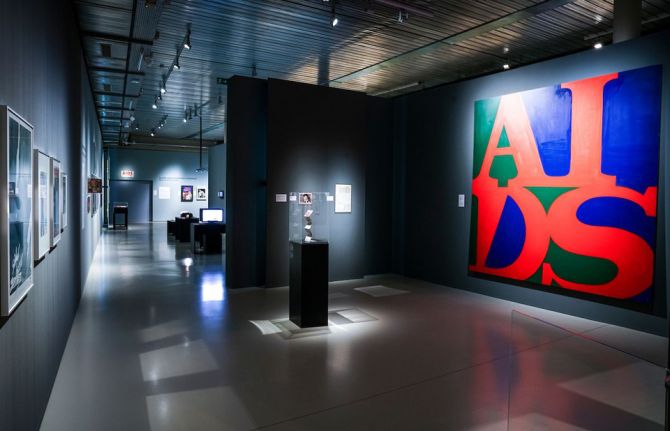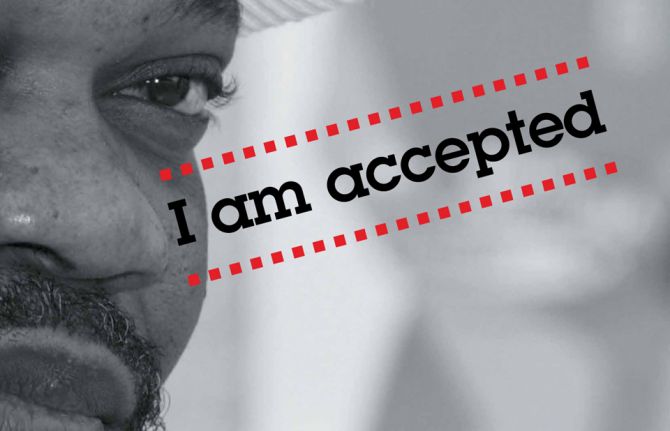




Feature Story
Posters at Red Cross and Red Crescent Museum depict the AIDS response through the years
03 May 2017
03 May 2017 03 May 2017An exhibition at the Red Cross and Red Crescent Museum in Geneva, Switzerland, traces the AIDS response through posters and art from around the world over the past 30 years. The Fight against AIDS in Images explores the evolution of how HIV has been portrayed in campaigns encompassing sexuality, politics, stigma and HIV prevention—from using an image of a skull to the red ribbon, from depicting HIV as a death sentence to showing people living positively with HIV and from spreading fear to using humour.
“The point of our exhibition is not the disease itself, but all the communication materials around it,” said the Red Cross and Red Crescent Museum Director, Roger Mayou. “The many posters are a true mirror of society through the ages.”
The exhibition begins with Nan Goldin photographs from the mid-1980s as part of the first thematic, Other People’s Disease, highlighting how HIV was seen at the time to be concentrated among key populations.
The second theme, Silence is Broken, highlights how civil society and public figures raised their voices to address HIV. The iconic image of the pink triangle with the saying “Silence = Death” dates back to 1987 and was a part of the New York AIDS Coalition to Unleash Power (ACT UP) campaign.
Next comes AIDS and the Media. The death in 1990 of an American boy named Ryan White, who was infected with HIV by contaminated blood, crystallized the fact that the virus can affect anyone. More women and heterosexual couples appeared on posters and many countries crafted messages for national campaigns, as shown by the German posters from 1990 that emphasize “Don’t give AIDS a chance”.
The Virus, the second to last theme, focuses on explaining the science behind AIDS. A rendition of a normal T-cell and an HIV-infected T-cell by the Cancer Institute in 1991 has the slogan “Visualize this”. An Algerian World AIDS Day poster from 1994 likens the virus to mines floating in the ocean with a tagline “Protect the family”.
The last theme, Living Together, introduces the fact that, with the advent of antiretroviral medicines in 1996, HIV need not be fatal. As a result, the Swiss Stop Sida (End AIDS) campaign began to incorporate a “Love life” message on their posters in 2005. A black and white UNAIDS World AIDS Day poster shows a close-up of a man with the tagline “I am accepted”—part of the I am Living My Rights campaign stressing the normality of living life as an HIV-positive person.
“HIV has become invisible, a fatigue has almost set in,” Alexandra Calmy from the HIV unit at the Geneva University Hospitals said. “And yet 2.1 million people are infected with HIV every year, so it is important to talk about AIDS, and this exhibition does just that.”
UNAIDS is working with countries towards ending the AIDS epidemic by 2030 as part of the Sustainable Development Goals.
Resources
Region/country
Related
 Government ensures continuity of treatment in Malawi
Government ensures continuity of treatment in Malawi

10 February 2025


